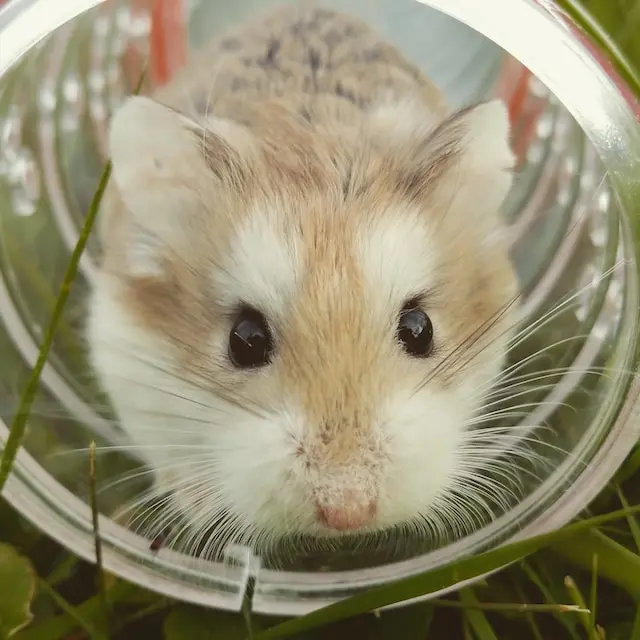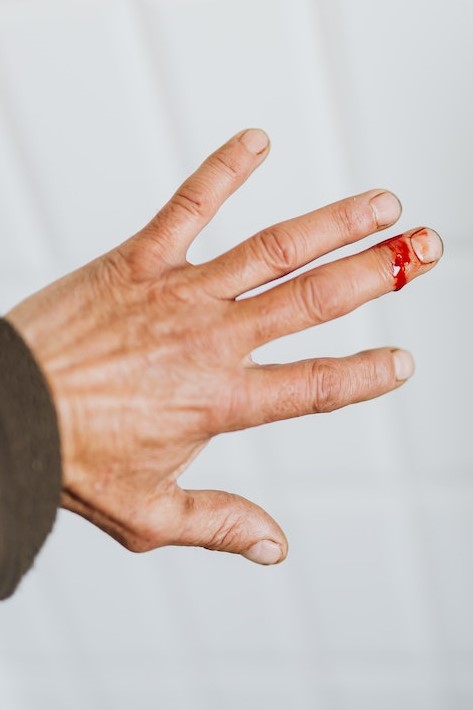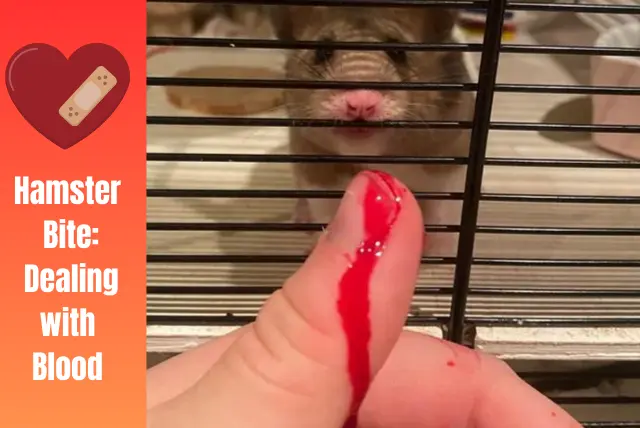While hamsters may appear charming and cuddly, it is important to note that they are capable of biting, especially when they feel threatened or scared. However, in most cases, a hamster bite is not dangerous but can cause pain. But what if a hamster bite me and draws blood? What are the reasons behind this behavior, and how can we prevent it? This article aims to address these questions and provide helpful tips for dealing with hamster bites.
Hamster Behavior

Before getting into the details, it’s crucial to recognize that biting is a common behavior among hamsters. While certain breeds may display a higher tendency for biting, all hamsters have the potential to bite when they feel frightened, stressed, or in danger.
Hamsters, being small creatures, often exhibit fear or wariness in their surroundings. Due to their limited eyesight, they heavily rely on their keen sense of smell to navigate their environment. It is noteworthy that they might mistake your finger for food if you’ve recently eaten, or become scared if awakened suddenly.
Bites from cute to harsh
Let’s find the act of biting itself. Biting can range from gentle nibbles to firm bites that break the skin and result in bleeding. In cases where a hamster bite doesn’t puncture the skin, it can generally be treated by cleansing the affected area with soap and water, and if necessary, applying an antibiotic cream.

However, if a hamster bite breaks the skin and causes bleeding, it is important to take proper care. Firstly, apply pressure to stop the bleeding and ensure that the wound is cleaned thoroughly. Applying an antibiotic cream can help prevent infection. In more severe cases or if there is a risk of infection, it may be necessary to seek medical attention from a doctor.
Reasons of Hamster Bite
Several reasons could be behind a hamster biting its owner. Some of the most common ones include:
Fear and Stress
When you bring a new hamster home, it can feel frightened or stressed as it adjusts to its new surroundings and learns to trust you. In these cases, a scared hamster may resort to biting in order to protect itself.
Sleep Disturbance
Hamsters are creatures that prefer to be active at night and sleep during the day. Handling a sleeping hamster might startle it, leading to a potential bite.
Illness
Hamsters can exhibit signs of irritability when unwell, similar to other animals. If you notice your hamster biting more frequently than usual, this could indicate underlying health issues. In such cases, it is advisable to seek professional guidance by consulting a veterinarian.
Poor Handling
Hamsters are not fond of rough handling. If one were to grab or pick up a hamster abruptly, it might react by biting out of fear or stress. It would be advisable to allow the hamster to willingly climb onto your hand instead.
Misidentification
As mentioned earlier, hamsters have poor eyesight, and they rely heavily on their sense of smell. If your hands smell like food, your hamster might mistake your fingers for a tasty treat and bite you.
Hamster Bite: Dealing with Blood

If a hamster bite causes bleeding, the initial step is to control the bleeding. Applying pressure to the wound using a clean cloth or bandage usually stops the bleeding. Once it has ceased, thoroughly cleanse the wound with soap and water.
Once the wound has been cleaned, it is important to apply an antibiotic cream to prevent any potential infection. Subsequently, cover the wound with a bandage and remain vigilant for any indications of infection, such as redness, swelling, or the presence of pus. Should you observe any of these signs or if the wound appears to be unresponsive in terms of healing progress, it is advisable to promptly seek medical attention from a doctor.
Minimize the risk
To prevent hamster bites, it is crucial to understand your furry friend’s behavior and provide a safe and comfortable environment. Here are some helpful tips for preventing hamster bites: Explanation: The original sentence has been divided into two shorter sentences to improve readability.
Allow Adequate Adjustment Time
If you have just brought a new hamster into your home, it is important to give it some time to adjust. Avoid the temptation of handling your hamster immediately. Instead, allow it to become accustomed to its new environment and become comfortable with your presence.
Proper Handling
Hamsters should always be handled gently and patiently. It is important to allow them to climb onto your hand willingly, rather than grabbing or picking them up suddenly.In preparing to handle a hamster, it’s important to wash your hands beforehand. This helps eliminate any lingering scents that could confuse the hamster and potentially lead to biting.
Behavior
If someone notices that their hamster appears scared or stressed, or if it is exhibiting unusual behavior, it is recommended to refrain from interacting with it. Trying to handle a frightened or stressed hamster may result in bites.
Comfortable Habitat
To ensure your hamster’s comfort and safety, it is important to provide a comfortable and secure cage. Make sure to include ample bedding for your hamster to burrow into, creating a cozy environment. Additionally, ensure that the cage is spacious enough for your hamster to move around comfortably.
Wrapping Up
Hamster bites can cause pain and fear, but they are typically not serious. To avoid hamster bites, it is important to understand your pet’s and create a safe and comfortable environment for them. If a bite occurs and draws blood, make sure to thoroughly clean the wound and watch for any signs of infection. In case of uncertainty, seeking advice from a doctor is always recommended.
FAQ’s
How can hamster biting be trained out effectively?
Avoid sudden movements and loud noises that may startle the hamster, leading to potential biting incidents.
What signs suggest a stressed or fearful hamster, even if it hasn’t bitten?
These include hiding, trembling, making high-pitched squeaking noises, or biting at the bars of its cage and wet tail.
Does having another hamster in the same cage reduce biting due to loneliness?
In some cases, having a companion can be beneficial for hamsters, whereas others may thrive when kept individually.
However, it is worth noting that male hamsters tend to display more biting behavior compared to their female counterparts.
How does bedding and cage setup affect hamster biting behavior?
To prevent stress and biting, providing a comfortable and stimulating environment proves helpful.
